In 1913, a young Black man was convicted of killing a white boy in RI. Was it a legal lynching?
The first few decades of the 20th century were perilous times for Black men in America, as two Rhode Islanders would learn all too well.
This was the height of the lynching era, when all but five states experienced these extrajudicial murders and when politicians across the land debated what could — or even should — be done to stop them.
But the judicial system was not much safer. Black defendants saw courts rigged against them, especially in death-penalty cases, with white prosecutors charging them with more serious crimes, with white defense lawyers representing their clients less zealously and all-white juries convicting on flimsy evidence. The 1930s saw the highest number of executions of any decade in U.S. history, and more than two-thirds of the convicts put to death were Black.
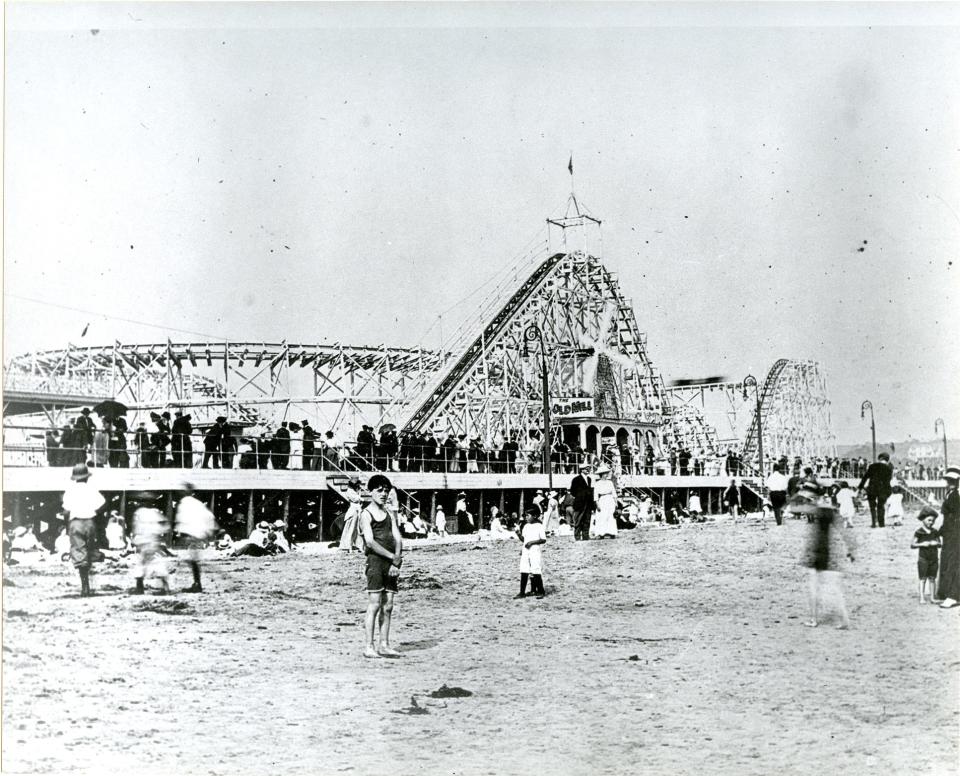
"The early 1900s coincided with a lot of racial violence," Robin Maher, executive director of the Death Penalty Information Center, said recently. "In some respects, capital punishment came to replace lynching as a way of controlling, subduing and restricting the activities of Black people."
This series tells the stories of two young Rhode Islanders caught in the eye of this storm. It tells how fellow Rhode Islanders — Black and white — stood behind them when their lives were on the line.
While it recounts events from a century ago, "Legal Lynching" offers lessons that are fresh today.
"It was inspiring to see that so many groups did gather around and that the community really exercised its voice in demanding something more just happen here," said Megan Byrne, staff attorney with the Death Penalty Project of the American Civil Liberties Union. "We as a community do still have voices that can be heard, and I think it's a good lesson because even in this situation — it's the early 1900s and so many things are unfair and we might feel so powerless — but even then, people were able to organize and make their voices heard."
Below is the story of one of those men, Brad Smith, from Newport.
Chapter 1: Brad Smith, young Black man, chased down Newport beach by an angry white mob
NEWPORT — “Lynch him!” several in the mob of more than 100 yelled as they chased Charles Bradley Smith down crowded Easton’s Beach toward the Atlantic Ocean after Fourth of July fireworks in 1913.
Nearing the water’s edge, some yelled, “Drown the Black bastard!” And worse.
Smith, 21, who went by the nickname Brad, was running out of dry sand.
He’d been carrying a revolver in his pocket all evening, planning to fire off a few rounds in salute to the Fourth of July. Now, it would become his lifeline. He hoped.
He turned toward the mob and drew the gun, aiming generally at the crowd before firing all six chambers of the .32-caliber Forehand & Wadsworth.
That afternoon, he had loaded the gun with blanks, but the loud Bang! and the muzzle flash on the dimly lit beach had its effect.
The mob paused and parted slightly, giving him a clear path toward the boardwalk and roller coaster.
As he darted toward freedom, the mob resumed its pursuit.
Thousands had come for the fireworks
A crowd of some 5,000 people had come to the beach that Friday evening to watch the fireworks and to seek refuge from the July heat.
Among them was a 12-year-old Irish boy, Willie Egan. His parents didn’t usually let him out without them at night, but he would be 13 in two months, so they bent the rules. Besides, his younger brother, David, was going with him. And, their older sister, Mary, worked at the beach, a salesgirl at the cigar stand. The boys would hardly be alone.
During the school year, Willie was a paperboy for the Newport Daily News. For the last three years, he had taken summers off to caddie at the Newport Golf Club, where he was popular among the golfers and his fellow caddies.
Around 9:25 p.m., on the second pull of the trigger on Brad’s gun, the round in the chamber was not a blank, but live ammunition. A slug flew from the muzzle, caught Willie below the right eye and ripped into his brain.
Many in the crowd saw Willie drop to the sand. It added new energy — and venom — to the pursuit of Brad. The cries of “Lynch him!” grew more frantic.
Thomas J. Kelley was standing near Willie when the shooting started. He saw the boy fall and bent down to help him. Willie’s face was covered in blood.
“Help!” Kelley yelled. “He got shot!”
Kelley picked Willie up by the shoulders.
It seemed like forever passed, and no one stopped to help. But, only a moment later, Cornelius C. Moore grabbed Willie by the feet, and the two men carried him to a room inside the entrance building.
The boy was still breathing.
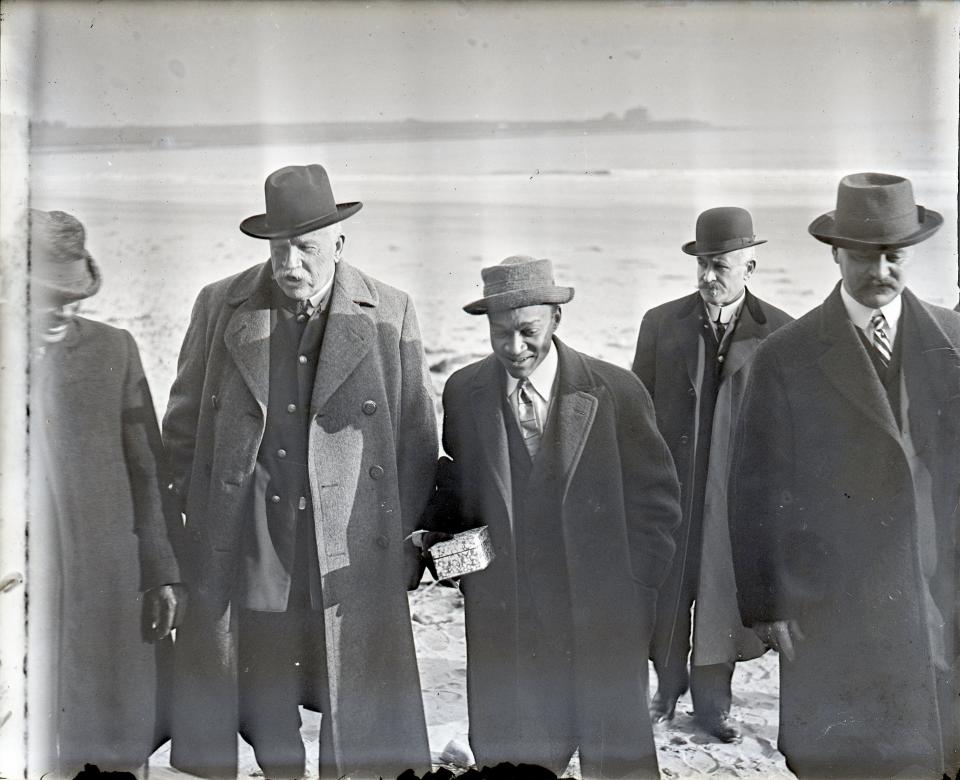
It started when white sailors jostled Brad and a Black friend
Charles Bradley Smith was born May 22, 1892, in Edgefield, South Carolina, the same state where his father had been born, probably into slavery, in 1857.
For Brad and his family, the dawning of the 20th century meant big change, not all of it for the better.
In 1899, the patriarch, Albert Smith, a successful carpenter, moved from South Carolina to Boston with his four children, Ethel, Lillian, Seymour and Brad.
Brad’s mother, Sallie Smith, was no longer in the picture. He and his siblings were being raised by his father’s second wife, a missionary named Flora, who was also on her second marriage. Albert and Flora had been married right before they moved to Boston.
But they didn’t stay there long. In 1902, they settled in Newport.
A couple of years later, daughter Ethel started working as a dressmaker and was married in June 1908. A year later, tuberculosis struck the Smith family home at 24 Clinton Ave. In August 1909, Ethel died, at home, of the highly contagious disease at age 25.
Two years later, Brad, then 18, began a relationship with a 17-year-old girl from Boston, Wilhelmina Kennedy. She became pregnant and gave birth to a son, Eugene Charles Kennedy, out of wedlock.
Through the tumultuous times, Brad finished two years of high school and worked some five years as a clerk at the Charles Tisdall Company, a grocery store and meat market on Broadway. He enjoyed an excellent reputation in Newport and was known as a quiet young man with a peaceable disposition.
On the morning of the Fourth, his mother asked him to fire off some rounds in their yard as a salute to the flag. He shot several live cartridges from the revolver, which he had never handled before, and then reloaded it with what he thought were blanks.
Foreshadowing what the night held in store, the police stopped two sailors from the Newport naval station, Ordinary Seamen Ernest R. Radu and Lloyd T. Maloney, who were walking on the sand of Easton’s Beach that afternoon. Police reports didn’t say why, and the sailors were free to go.
In the evening, Brad and a friend, Charlie Campbell, also Black, went to the beach. After watching the fireworks, at about 9 p.m., they headed for the exit, which passed from the boardwalk through the main building at the beach.
Cyrus Rush, a chauffeur from Providence, waited for his passengers near the exit and saw two Navy sailors on the boardwalk who looked drunk.
Radu and Maloney bumped Brad and Charlie. It seemed intentional.
“What is the matter with you, you Black bastard?” one of the sailors asked.
Then Radu hit Charlie above the eye, and Maloney took a wild swing at Brad, almost falling over when he failed to connect.
As Radu got the better of Charlie, the pair moved up the beach, Charlie looking to escape.
Brad was beating up Maloney when Radu, after Charlie fled, returned to the exit, and both sailors attacked Brad at once, prompting Brad to run down the beach to get away.
Although Cyrus Rush had a good view of the action, he could not pick out which of the young Black men was Brad. “They all look alike to me,” he would say later.
By now, the fight had attracted attention, and a mob pursued.
After shooting the gun, opening an escape route through the crowd, Brad sprinted for the boardwalk, crossed over it and was on his way to freedom when Frank W. Pearson Jr., a former classmate, made a flying tackle, grappling Brad around the legs. They fell to the sand near the power house for the roller coaster, and the mob pounced, pummeling Brad with fists and feet.
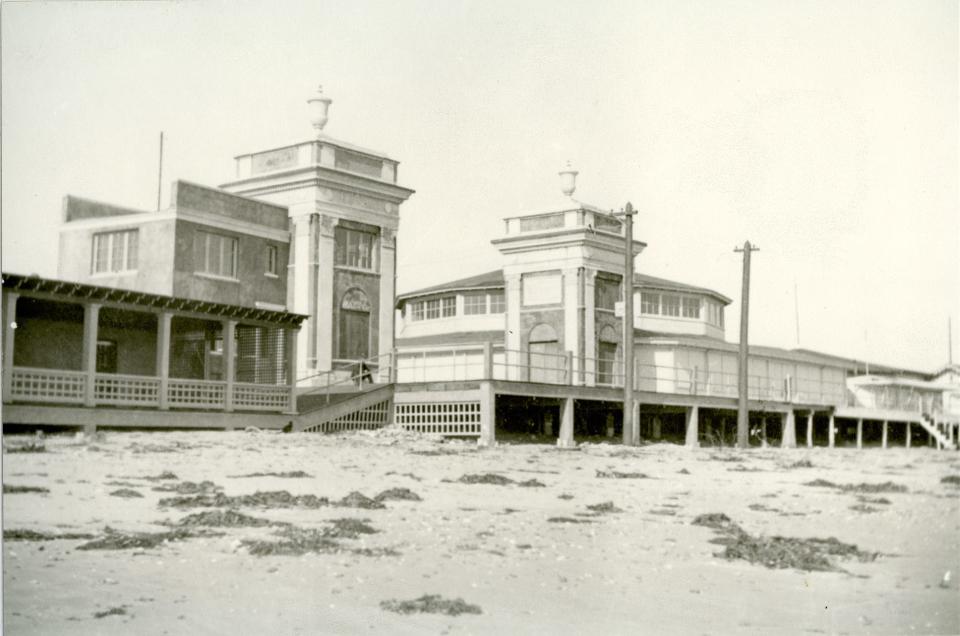
The race to save Willie’s life
As Kelley and Moore carried Willie into the building, they passed the cigar stand and Willie’s sister Mary, who did not even realize it was her brother in their arms.
A Catholic priest on the beach for the fireworks performed last rites.
Someone called for an ambulance, but Moore knew they couldn’t wait. He carried the boy to the parking lot. “It’s an emergency!” he told a driver parked near the entrance. “Take us to the hospital!”
The driver refused. As did another. And another.
Finally, taxi driver George Boyle told his paying customers to get out of his car. He and Moore sped to the hospital with the boy. Doctors had been alerted and were standing by to help when they pulled up to Newport Hospital.
Dr. Alexander J. Anderson came to examine the boy.
It was too late.
William P. Egan Jr., son of William P. and Agnes G. (Manning) Egan, had died during the ride to the hospital, on July 4, 1913.
The mob is bent on vengeance
Now Brad’s life would need saving.
Officers John P. Finn and Michael J. Durnan fought their way through the mob to where four sailors were restraining Brad.
The crowd was punching and kicking and flailing to get a piece of him.
The officers drew their guns to hold the mob back.
The crowd was so dense and so angry that heading across the beach to the exit was out of the question.
The officers led Brad to the water and waded into the surf waist deep, which kept the crowd at bay.
Durnan, Finn and Brad waded along the beach toward a spot closer to the beach office.
“Well, you men saved my life,” Brad said.
But the violence wasn’t over yet.
As the mob stormed after them, they dashed across the beach, getting inside the office and locking the door seconds before the crowd engulfed the building. The office resonated like a drum as the mob pounded on the side of the building, trying to get inside.
The banging was punctuated by the sounds of shattering glass as someone threw a brick through first one window and then another.
The officers drew their weapons again and took up positions in the broken windows, threatening to shoot anyone who tried to get in.
The police patrol wagon – with a squad of reserve police officers – pulled up to the building. Officers encircled Brad to protect him as they moved him to the wagon. The crowd threw bricks and sticks at the police.
Chants of “Lynch him!” were repeated.
The crowd followed the patrol wagon to the police station at Market Square, where hundreds, if not more, were still bent on delivering swift justice to Brad.
Officers cleared the square, keeping residents trapped in side streets for hours.
Brad’s father called Julius L. Mitchell, a former Newport lawyer, who came down from Providence as the case against Brad took its first steps through the legal system.
Abrasions and bruises covering his head, Brad hobbled to his arraignment in the police station with great difficulty.
He was held on bail in the Newport County jail on a charge of manslaughter. Would he be able get a fair trial after such a public spectacle?
Chapter 4: Brad Smith faces murder charges
PROVIDENCE — The Rev. John A. Thompson, one of the jurors in Charles Bradley Smith’s murder trial, drew a line in the sand almost from the moment the jury began to deliberate.
This was a clear case of self-defense, he told his fellow jurors. He wasn’t about to send a young man down to Cranston and Rhode Island State Prison for defending himself against a mob bent on killing him.
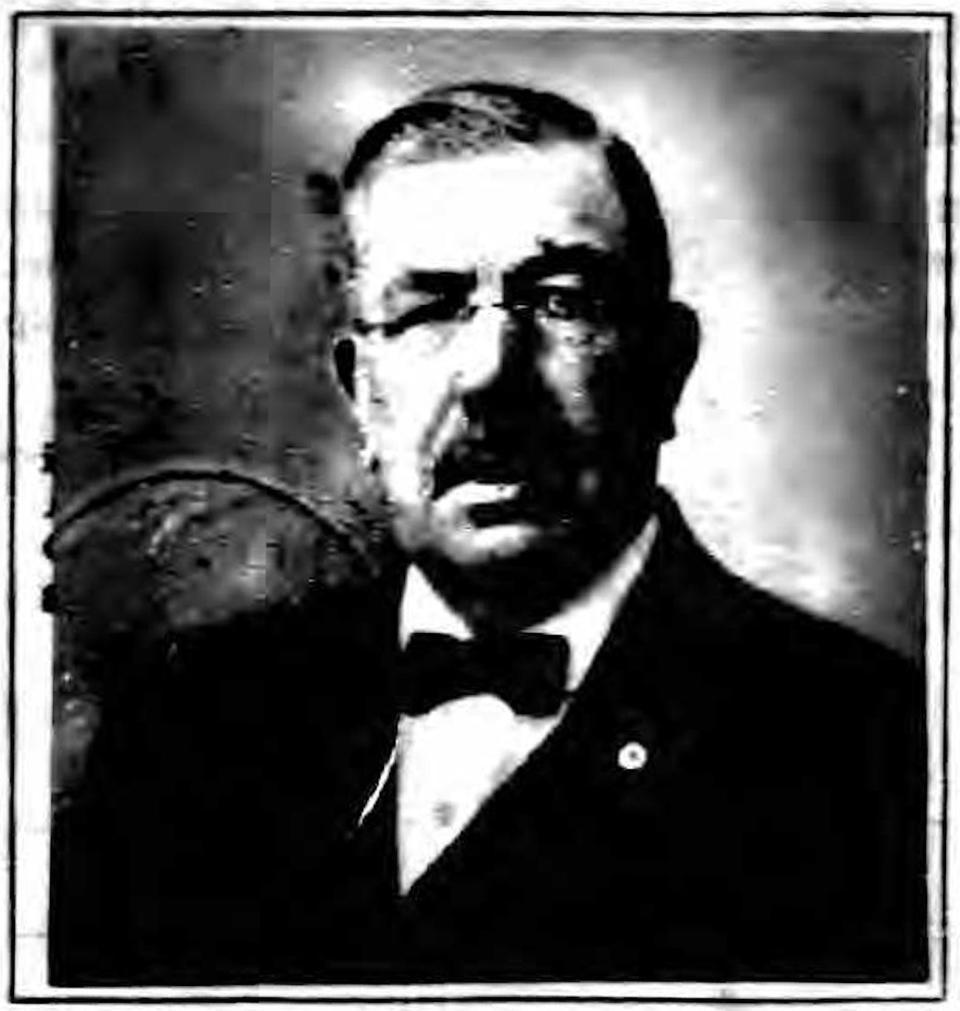
“He’s a coon,” another juror replied. “Let’s send him down.”
“You’ll eat the uppers off your shoes before you’ll send him down,” said Thompson, letting everyone know he was prepared to deliberate as long as it took to find Brad not guilty.
Thompson was a no-nonsense man, born in Glasgow, Scotland, who'd immigrated to Central Falls in the mid-1880s with his wife, Isabella, and their three young children. He found work making molds at an iron foundry, rising to a supervisor’s job.
But his true calling was off the factory floor.
In 1904, he founded the Dexter Street Rescue Mission, near the railroad tracks in Pawtucket. The mission provided free breakfasts on Sundays and free suppers on Wednesdays. It offered lodging, employment services and religious instruction. But its main mission was battling liquor and helping those caught in its thrall.
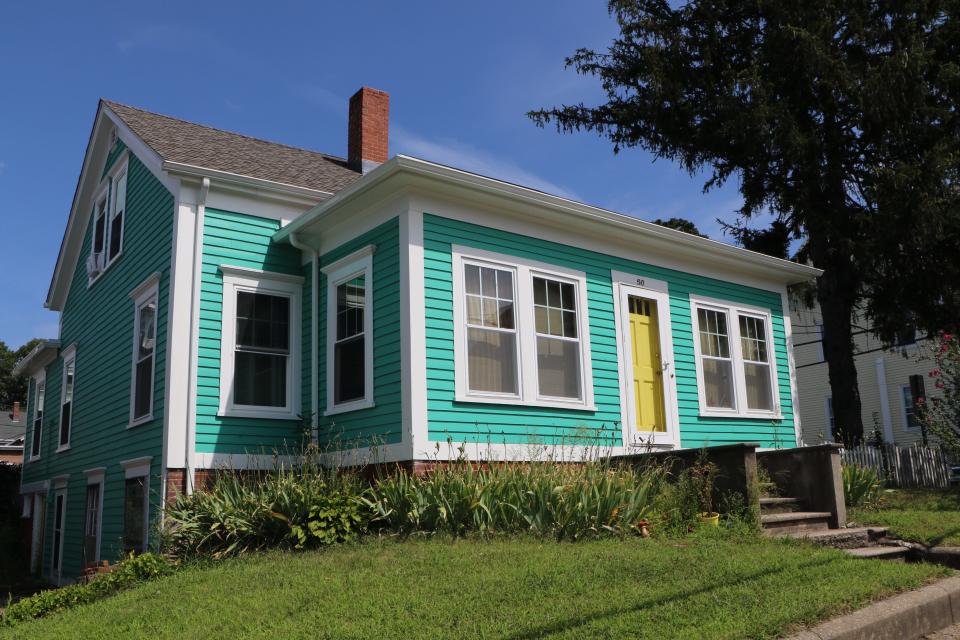
By the time Brad’s trial began, Thompson had honed his preacher’s charisma, paired with dashing good looks: blue eyes, ruddy complexion and a bushy mustache.
He would not be easily swayed.
Brad’s lawyer had done well to get Thompson seated on the jury.
It was far from an accident.
A few years before the trial, the 1910 U.S. Census counted 377 lawyers in Rhode Island. Two of them were Black: William A. Heathman and Julius L. Mitchell. Both lived in Providence, but Mitchell had recently practiced in Newport. And Mitchell, like Brad and Albert Smith, was a native of South Carolina.
He was more than just Brad’s advocate in the courtroom. Moved by the near lynching on Easton’s Beach that summer, Mitchell was among a group of influential Black leaders who would go on to found the Providence branch of the NAACP before Brad’s case was finished.
Mitchell’s first strategic victory was to get the trial moved to Providence from Newport, arguing that finding an impartial jury in Newport County would be impossible.
Even so, better than anyone, Julius Mitchell knew the odds were stacked against Brad when the trial opened in December 1913 in Providence Superior Court before Judge John Doran.
Mitchell quizzed every potential juror: Would the fact that Brad was Black and Willie Egan white make any difference in how they decided the case?
Nine days of testimony and legal maneuvering added no new facts to what “everyone” knew about the case: The fight with the sailors, the chase on the beach, Willie’s death, Brad’s harrowing rescue by the Newport police and the would-be lynch mob following him to the police station.
A few curveballs interrupted the normally well-scripted rhythm of a criminal trial:
A trip to the beach
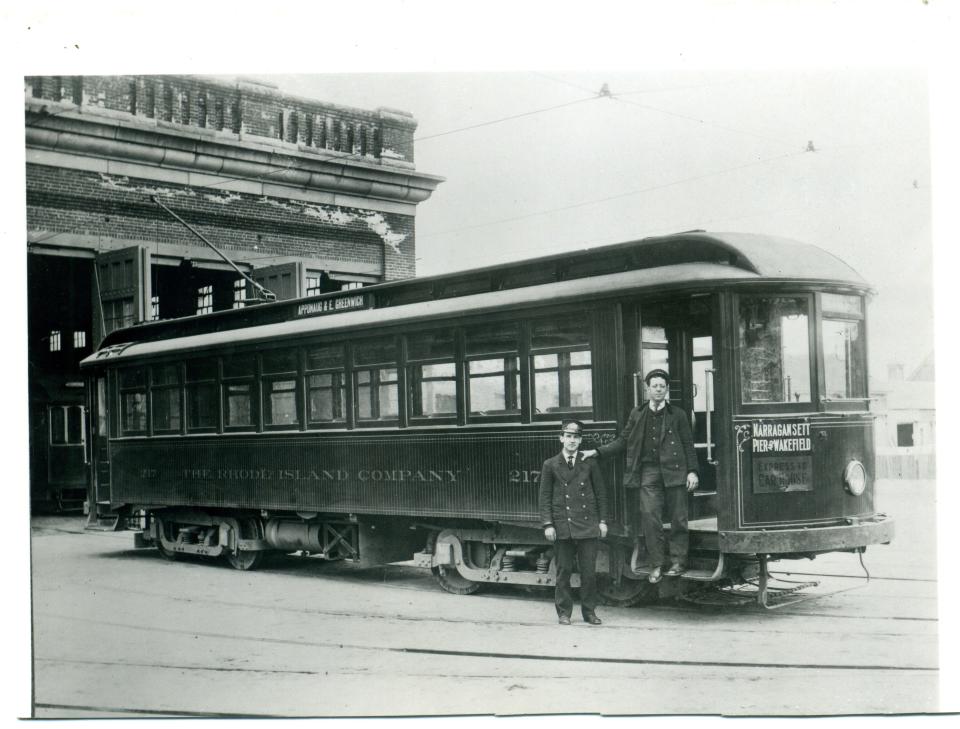
After the state rested its case on Friday, Dec. 12, jury foreman Frank E. Packard, a Providence jeweler, alerted Judge Doran that the jury would like to visit Easton’s Beach to understand the lay of the land.
The next day, the judge, jury, lawyers and sheriffs — and Brad, handcuffed to a stout sheriff’s deputy — traveled by electric trolley from Providence to Bristol, by ferry to Aquidneck Island, by another trolley to downtown Newport and by a third trolley to the beach. They spent about an hour on the cold, shuttered, winter beach imagining what it looked like teeming with thousands of tourists on a sweltering Fourth of July.
Shooting in the courthouse
On Monday, Dec. 15, the judge, jury and lawyers were escorted to the basement of the courthouse, where they witnessed Inspector William E. McGann of the Providence Police Department test-fire a blank from the gun Brad had used on July Fourth.
The jurors examined the exploded shell, and the state argued that none of the shells in Brad’s gun could have been blanks on the night of the shooting.
Bible verses, short stories, but no testimony from Brad’s stepmother
On Wednesday morning, Dec. 17, Brad’s lawyers called their last witness: Flora B. Smith, Brad’s missionary stepmother.
They started questioning Mrs. Smith. They did not get very far.
Instead of answering questions, Brad’s stepmother recited Bible passages and sections of short stories.
Try as the lawyers and judge might to get her to focus on the case, she was too overwrought.
Judge Doran quickly called a recess, and friends comforted the distraught stepmother.
She was excused without testifying.
The beginning of the end
On Wednesday, Dec. 17, Julius Mitchell asked the jury to find Brad not guilty of killing Willie Egan without provocation:
“The prisoner was backed up against the edge of the Atlantic Ocean; he could go no farther, and what did he do? He made an opening in the crowd and changed his course. What would you do, what would I do, under those circumstances?”
Assistant Attorney General Livingston Ham summed up the state’s case:
Brad was getting the better of Seaman Maloney in their fight; he didn’t need to resort to a gun, Ham reasoned.
“Like a beast in the forest,” the prosecutor said, “he had tasted blood, and when he faced that crowd he was filled with anger and revenge and fire with a complete disregard for the consequences.”
Both lawyers urged the jury to set aside sympathy, either for Willie Egan and his mother, who had sat in the back of the courtroom each day dressed in mourning black, or for Brad and his stepmother, who had broken down on the stand.
“There is cause for sympathy on both sides,” Mitchell told the jurors, “but you must decide the case on the law and evidence as presented.”
Judge Doran instructed the jury that they didn’t need to find that the lynch mob was within striking distance of Brad when he fired the gun, only that he had genuinely feared they would inflict bodily harm on him.
The jury filed out of the courtroom at 10:13 a.m. on Thursday, Dec. 18.
They weren’t seen again until 4:25 p.m., when all the lawyers were summoned back to the courtroom, Brad was brought up from the basement holding cell, and spectators packed the gallery.
The jury was deadlocked.
More: RI has a deep connection to the slave trade
What is dividing you? the judge asked.
“The fact of the matter is,” answered foreman Frank Packard, “the thing that is being argued is: Who started the fight, the defendant or the sailor?”
The judge said that it was up to the jury to decide, but they could decide that Brad was no longer the aggressor if they believed he had run away from the initial conflict.
The jury went back to deliberate, returning to the courtroom less than an hour later. Packard said they wanted to hear the instruction about the start of the fight again. Another juror asked how close the mob needed to be to Brad for him to fear for his life.
The judge repeated that they had to decide whether, at the time he fired the gun, Brad had truly feared for his life.
At 6 p.m., they went back to deliberating.
Ten o’clock came and went.
In the jury room, Packard called for another vote.
Thompson was resolute, and a few jurors were brought over to his side.
Seven ballots were cast in favor of convicting Brad of manslaughter, a degree of homicide less severe than murder.
Five ballots favored setting him free, finding him not guilty.
At 10:20 p.m., they returned to the courtroom, and Packard reported to the judge.
Doran had heard enough. This jury was never going to reach a unanimous verdict. He dismissed the jurors and declared a mistrial.
Ham announced that the state would try Brad again and asked that he continue to be held on bail, which Brad had not been able to afford since it was set the day after the shooting at $5,000 – worth more than $150,000 in 2023.
The case is back less than a month later
It was a new year when Brad’s second trial got underway on Jan. 12, 1914, but less than a month had passed.
This time, Judge John W. Sweeney, a rising figure in the Rhode Island judiciary, would preside in Providence Superior Court.
Jury selection finished the same day, and the second jury heard pretty much the same testimony that the first jury had.
With one exception.
The state called David Egan, about two years younger than his brother Willie.
David told of leaving the beach to head home at 8:55, a few minutes before the trouble started on the Fourth of July. He didn’t offer any details about the shooting, and he began crying when talking about his brother.
On Wednesday, Jan. 21, the jury began deliberations around 11:20 a.m.
Word leaked from the jury room that a morning vote had found seven in favor of a murder conviction and five in favor of manslaughter.
More: Strangers in a strange land: More on Newport's slaves
It did not look good for Brad.
In the early afternoon, another vote was taken: 11 for murder, one for manslaughter.
But nothing was heard from the jury for seven more hours.
At 7:58 p.m., foreman William T. Lewis, of Barrington, delivered the verdict: “Guilty of murder with recommendation of mercy.”
Lawyers seek third trial for Brad Smith
In March, lawyers for both sides argued Brad’s motion for a new trial.
Julius Mitchell spoke for two hours, arguing that Brad thought his gun was loaded with blanks and that, when he did fire the revolver, it was only in self-defense.
Livingston Ham spoke for 45 minutes, saying that Brad had acted out of malice, as evidenced by his firing all six chambers of the revolver and by his showing no concern for whether the gun held live rounds or blanks.
In May, Judge Sweeney ruled against a new trial.
Brad appeals to Rhode Island Supreme Court
Brad’s lawyers, Julius Mitchell and Newport politician Clark Burdick, cited more than 50 instances in which they thought Judge Sweeney had made errors during the trial.
The Rhode Island Supreme Court dismissed all but one out-of-hand: Should the judge have granted a new trial because Brad was justified to fire his gun when faced by the mob chasing him on the beach?
The high court noted that, while some witnesses testified that the mob called for lynching from the start of the fight, others testified that lynching was only discussed after Willie Egan had been shot.
The justices ruled that it was not a given that a young Black man justifiably feared for his life when being pursued by a crowd of more than 100.
The justices dismissed Brad’s appeal and ordered the Superior Court to proceed with sentencing.
By the time the Supreme Court rejected Brad’s appeal, John Sweeney, the judge who had heard the jury’s recommendation to show Brad mercy, had moved from the Providence County court.
Instead, Superior Court Judge George T. Brown was on the bench on April 5, 1915. Following the law that left no latitude, he sentenced Brad to state prison “for and during the term of his natural life.”
That meant that Brad would never be freed, that he would one day die in prison.
And, so, the court case against Charles Bradley Smith was done.
But neither Julius L. Mitchell nor the Rev. John A. Thompson nor Judge John W. Sweeney would let Brad go that easily.
Chapter 8: Brad Smith draws second thoughts from a governor
In 1920, the 19th Amendment gave women the right to vote — and gave Charles Bradley Smith hope for life outside prison.
Lt. Gov. Emery J. San Souci, looking to move up to the governor’s office, actively courted the support of this new voting bloc, including the Black women’s clubs, who were a key part of the coalition that brought about Women’s Suffrage. When they delivered San Souci a win, they expected to be remembered.
But that wasn’t the only thing that broke Brad’s way in 1920.
John W. Sweeney, the judge who had presided when the jury convicted Brad in 1914 and recommended mercy, was elevated to the state Supreme Court.
And Clark Burdick, one of the lawyers who, with Julius L. Mitchell, had represented Brad at trial, was finishing up his first of seven terms representing Rhode Island in Congress.
For once, the deck might actually be stacked in Brad’s favor.
Brad’s supporters go to work
Julius Mitchell, though he'd moved to Brooklyn and become a public defender, stayed in touch.
And the Rev. John Thompson, as Prohibition cut into his work campaigning against liquor, had time to devote to other causes.
In 1921, Mitchell, with help from other supporters, petitioned San Souci to pardon the young Black man. It was not the first petition submitted to a Rhode Island governor on Brad's behalf.
San Souci’s predecessor, R. Livingston Beeckman, had received a similar request but had told Willie Egan’s mother, Agnes, that he wouldn’t consider a pardon until Brad had served 20 years of his sentence.
The 1921 effort with San Souci would also fail.
But Mitchell was back in 1922.
On March 13, Burdick presented the petition drawn up by Mitchell to the governor.
And powerful men lined up to support it.
Burdick — and other Newport politicians — came out in favor of the pardon.
So did Justice Sweeney.
And Governor San Souci, who had bungled a deadly labor strike against textile mills in the Blackstone and Pawtuxet Valleys, was looking to create friends.
San Souci makes a move
On Thursday, March 30, San Souci sent two pardons to the state Senate for its advice and consent.
One was for Isabella B. Souza, who’d been sentenced the previous year to 3½ years for abortion.
The other was for Charles Bradley Smith, who had already served eight years of his life sentence.
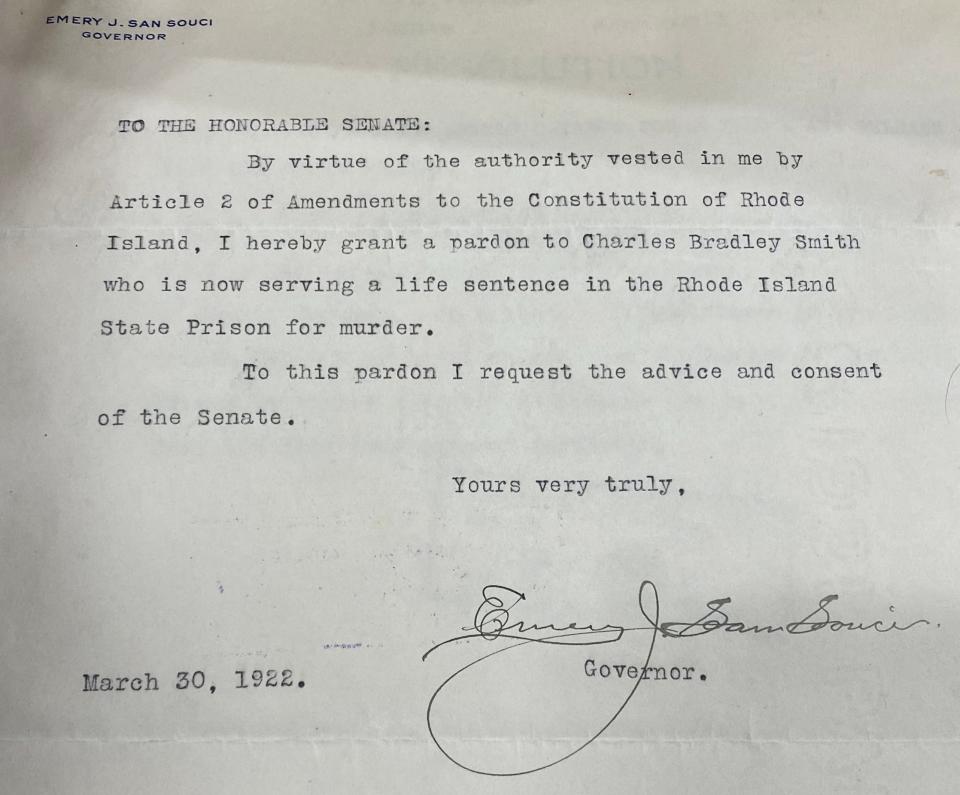
At an April 6 hearing of the Senate pardons committee, lawyer Cornelius C. Moore, the bystander who had helped carry the dying Willie Egan to Newport Hospital nine years earlier, represented the Egan family in opposing the pardon.
“Would it be wise to let the people of this state know that a man can kill and then get a pardon in less than eight years?” Moore asked the committee. “Opinion in Newport is all against this pardon.”
Agnes Egan called it a “terrible injustice” and recalled former Governor Beeckman’s pledge to keep her son’s killer behind bars at least 20 years.
James T. O’Connell, who had witnessed the fight at the beach and the shooting, called the pardon political.
“Some of the men behind this think they can make themselves solid with certain voters in Newport,” O’Connell testified, and questioned the way in which San Souci went about proposing the pardon. “Why didn’t he call upon me and the other witnesses for the state, and why didn’t he ask the opinion of the chief of police?”
The Rev. Thompson speaks to the Senate
On the other side, the Rev. Thompson bore witness to his time on the jury that had been deadlocked.
“In the minds of five members of that first jury, it was never proved that the Smith boy was a murderer. There was no element of malice aforethought, of premeditation, in his act,” Thompson said. “The crowd put after Smith. They cried, ‘Lynch him! Lynch him!’ Smith turned and cried, ‘Stand back, or I’ll shoot!’ But they did not stand back. They chased him, and he, running from them, pulled his revolver and shot six times.”
Daniel Whitehead, a Providence painter and manager of the Colored All-Stars traveling baseball team, said he had polled “pretty nearly everyone in Newport,” and they all wanted Brad freed.
On Friday, April 21, the Senate voted to confirm seven pardons, including Brad’s.
Thompson travels to Cranston
But that didn’t mean Brad was immediately free.
The following Monday, the Rev. Thompson went to the State House and got a certified copy of the pardon vote.
Then he and Brad’s father, Albert, and sister, Lillian, headed straight to the Rhode Island State Prison, in Cranston.
Thompson showed the pardon to Warden Charles E. Linscott.
Still, it wasn’t back to Newport for Brad just yet.
The whole party went back to Providence and paid an afternoon visit to the State House.
San Souci met with Brad. Brad thanked San Souci for releasing him.
And then Brad, who was supposed to one day die in prison, went on with the rest of his life, a free man.
Epilogue: Brad Smith's legacy lives on today
On Christmas night in 1922, eight months after he left the state prison, Charles Bradley Smith, 29, married Hilda Inez Bryan, 23, a nurse from New Bedford. They were married at the home of her parents, Lewis and Bessie Bryan. The bride wore a gown of silver pearl and carried a pink bouquet.
They moved in with Brad’s father, Albert Smith, on Pearl Street in Newport.
A year and a half later, they were joined by a daughter, Floleila Macy Smith, followed by two sons, Albert Lewis Smith and Cyril Bradley Smith.
Brad became a chauffeur, the personal driver for Admiral William Sims, president of the Naval War College, and Mrs. Anne Sims.
Brad’s son Albert remains convinced that Mrs. Sims was one of the influential Newporters who had helped secure his father’s pardon. She became a benefactor of the family, often paying for coal for their furnace or buying them Christmas presents, Albert told The Providence Journal in July, at age 96.
On Feb. 22, 1937, Brad came down with the flu. He stayed home to fight the infection but developed pneumonia on March 3.
Five days later, on March 8, 1937, Charles Bradley Smith died at age 44, leaving his wife and three children, who never would have been born but for the legal work of Julius Mitchell and Governor San Souci’s pardon.
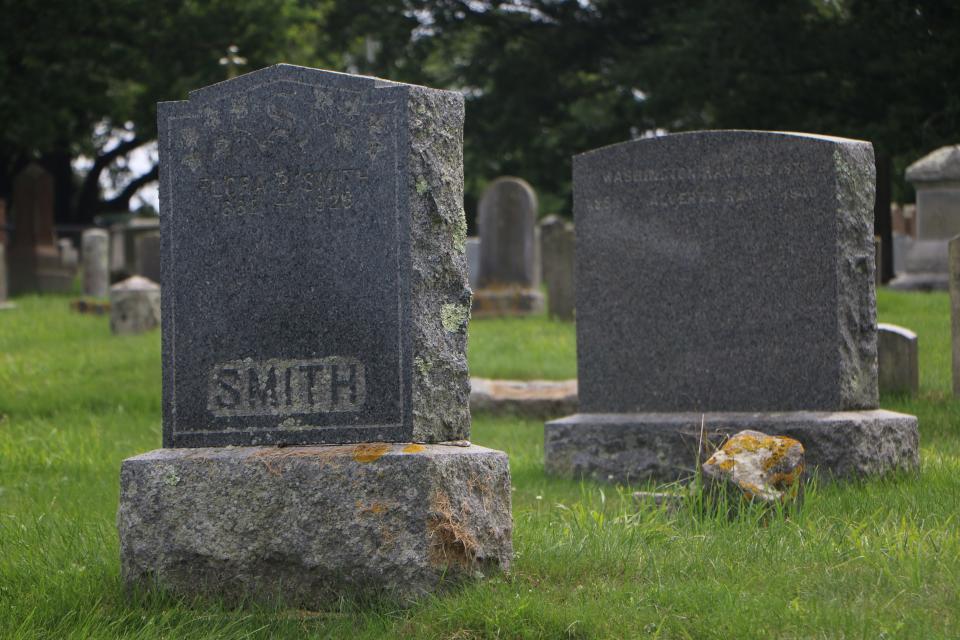
Cyril, who joined the Marine Corps, and Floleila, who did civilian work for the Navy, eventually moved to Cleveland.
Albert, currently a Providence resident, served in the Army and worked in a laundry business run by John “Jack” Egan, the younger brother of Willie Egan. Albert later pursued a career as a draftsman, ultimately retiring from Hasbro, where he worked designing a number of toys, including the Weebles line.
Eugene Kennedy, Brad's son from his teen years, eventually was accepted into the family.
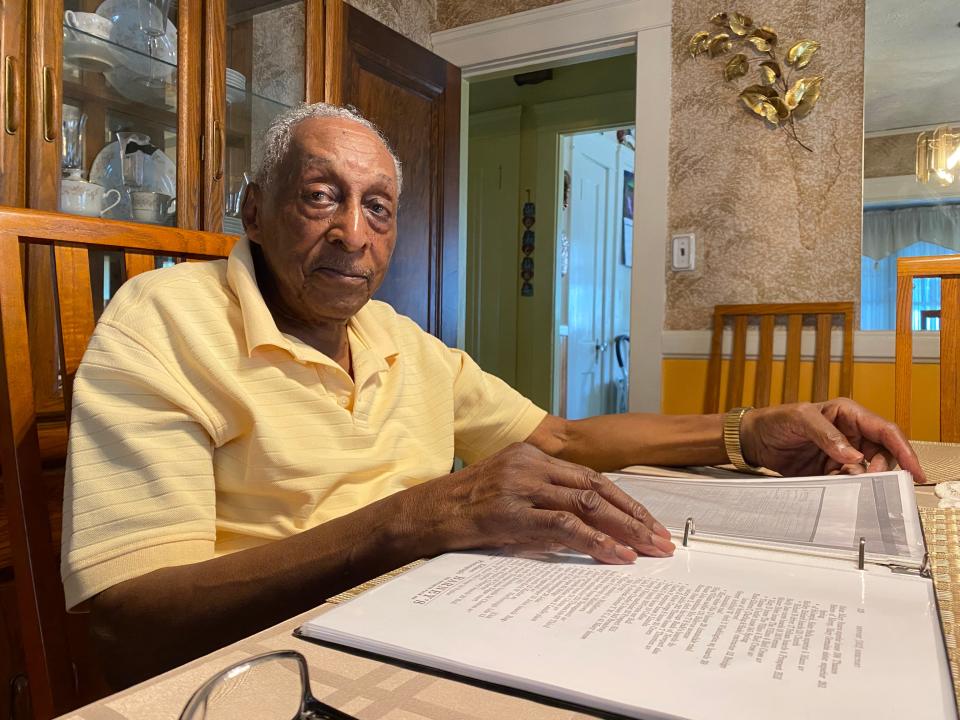
This article originally appeared on The Providence Journal: Why experts say conviction of Black RI man in 1913 was legal lynching

